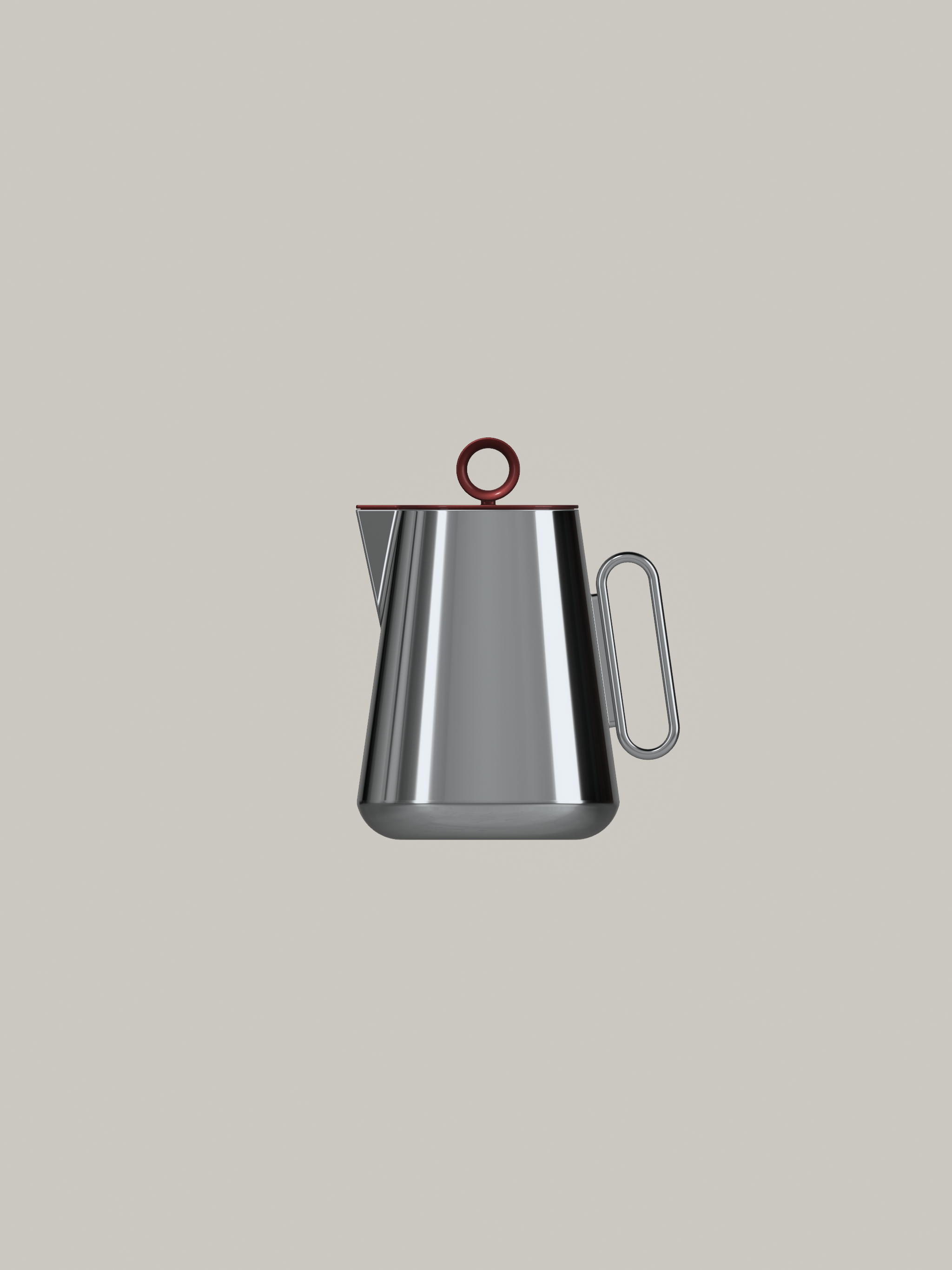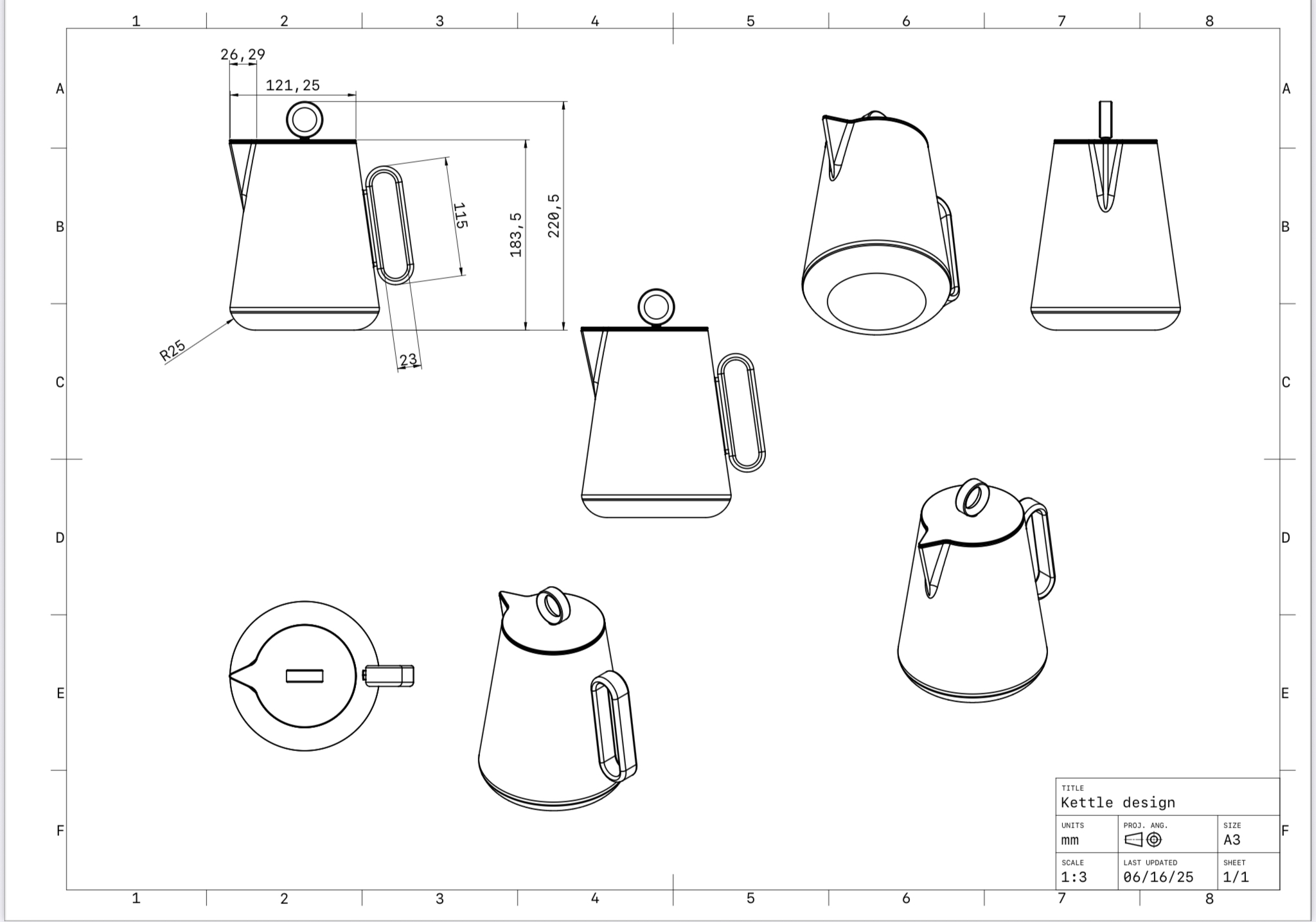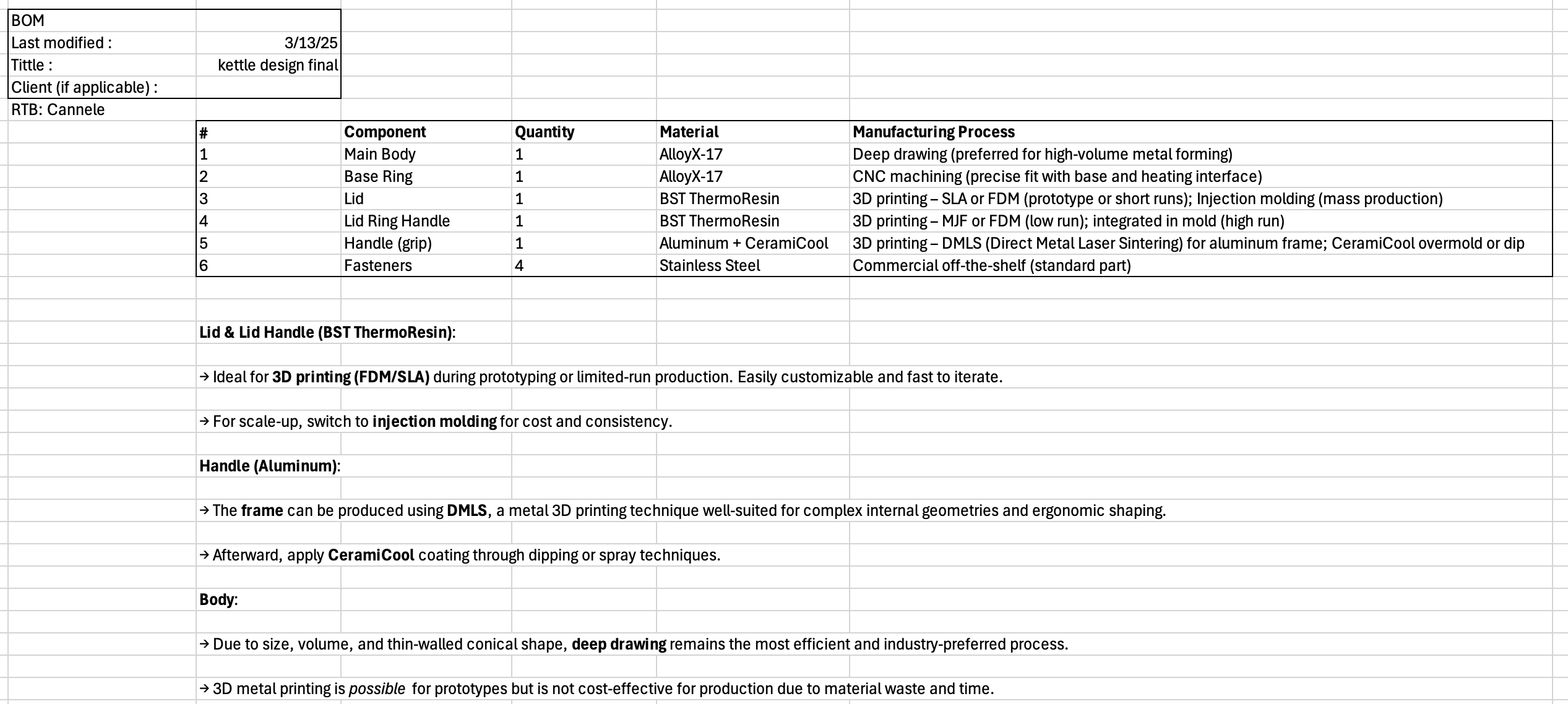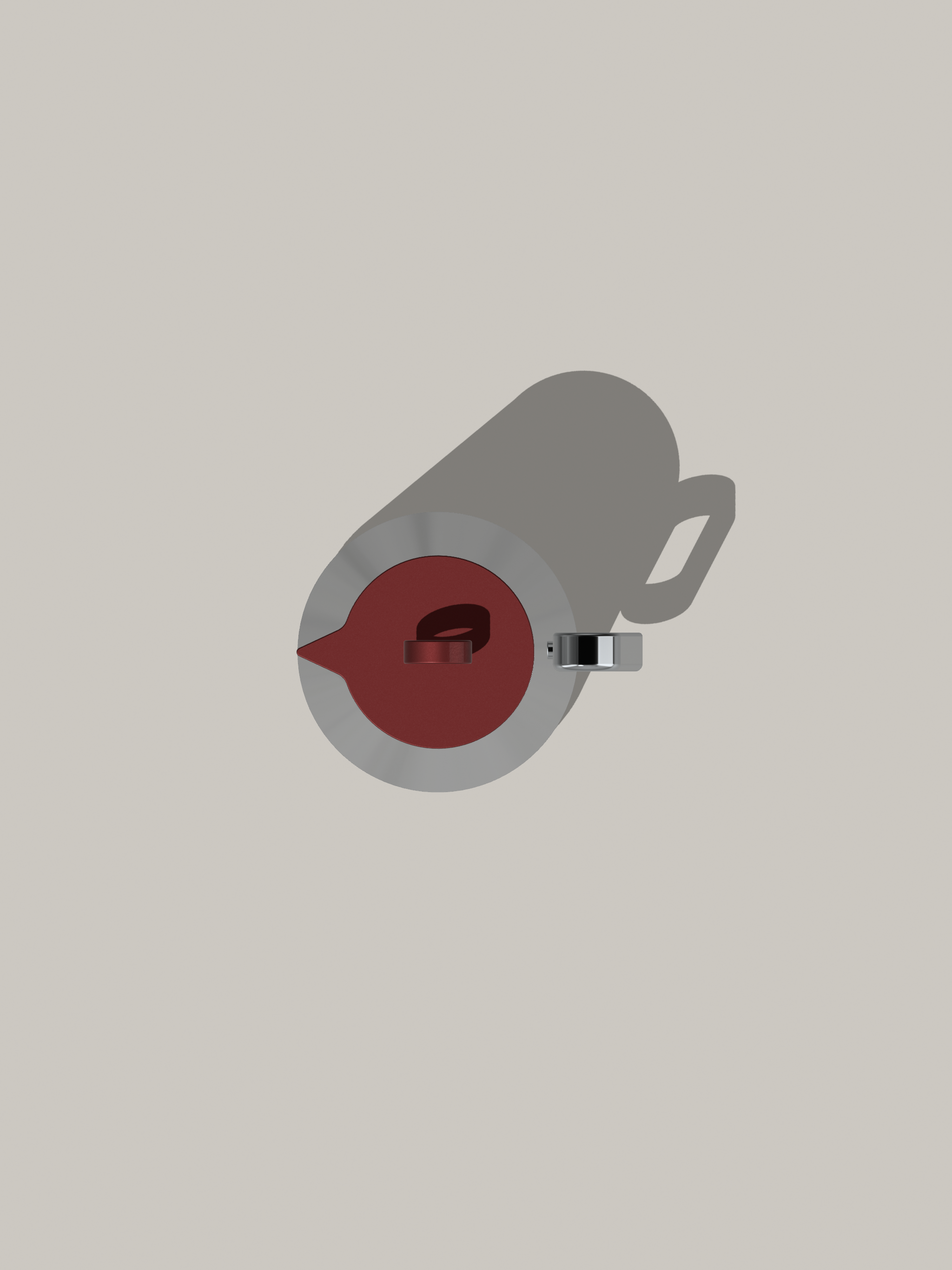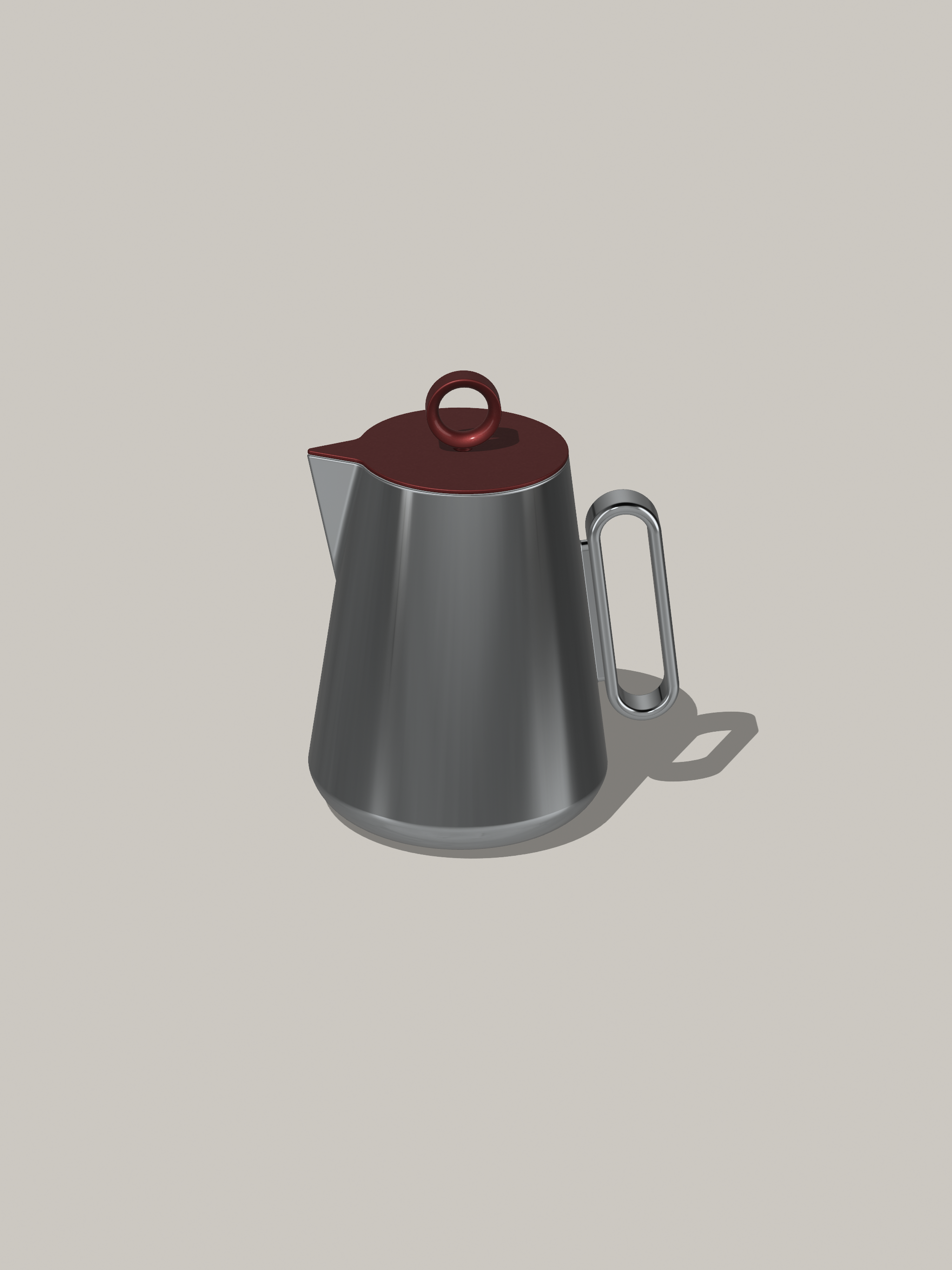
The ThermoCore Kettle combines minimalist aesthetics with cutting-edge material engineering. It features a sleek, conical stainless-steel body paired with a deep red thermo-insulated lid and an ergonomically designed handle. The kettle is designed for stovetop or induction use, and its components are modular for ease of assembly and repair.
